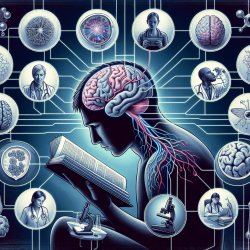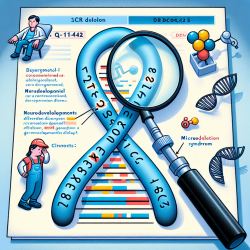Alexia Without Agraphia is a rare and intriguing neurological syndrome that presents a unique challenge for practitioners. This condition is characterized by an acquired inability to read words that have just been written down, while writing ability remains intact. The syndrome typically results from lesions in the splenium of the corpus callosum, disconnecting the angular gyrus from the visual pathway. Often, it is accompanied by a lesion in the left occipital lobe, leading to a visual field deficit.
The Historical Context
The understanding of Alexia Without Agraphia dates back to the late 19th century with neurologist Joseph Jules Dejerine's pioneering work. Dejerine's studies differentiated alexia and agraphia from aphasia, proposing that these were distinct phenomena. His observations laid the groundwork for recognizing Alexia Without Agraphia as a disconnection syndrome.
Recent Research Insights
A recent study titled Clinicoradiological Features of Alexia Without Agraphia presents two compelling cases observed at a hospital. These cases highlight the clinical presentation and radiological features associated with this syndrome. Practitioners can draw valuable insights from these cases:
- Case 1: A 77-year-old woman presented with difficulty reading but intact writing ability. MRI revealed a left posterior cerebral artery (PCA) stroke.
- Case 2: A 65-year-old man experienced lightheadedness followed by a right visual field cut. Neuroimaging showed ischemic changes in several brain regions.
Implications for Practice
The findings from this study underscore the importance of thorough clinical evaluation and advanced imaging techniques in diagnosing Alexia Without Agraphia. Practitioners should consider the following approaches:
- Comprehensive Neurological Assessment: Evaluate patients for subtle visual field deficits that may not be apparent during routine examinations.
- Use of Advanced Imaging: Employ MRI and CT imaging to identify lesions affecting the splenium of the corpus callosum and other critical areas.
- Rehabilitation Strategies: Implement targeted rehabilitation programs focusing on articulation drills, letter-by-letter reading, and finger tracing to improve reading skills.
The Path Forward
The rarity of Alexia Without Agraphia means that many practitioners may never encounter it firsthand. However, staying informed about such conditions enhances diagnostic acumen and treatment strategies. Encouraging further research into this syndrome can provide deeper insights into its pathophysiology and potential therapeutic interventions.
For those interested in delving deeper into this fascinating topic, I recommend reading the original research paper: Clinicoradiological Features of Alexia Without Agraphia.










